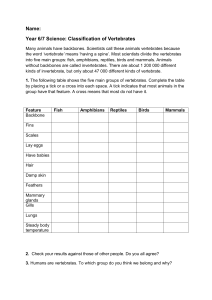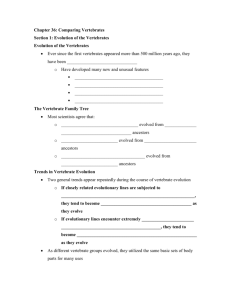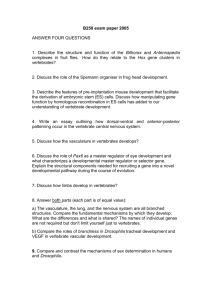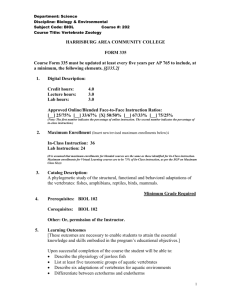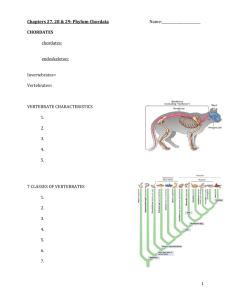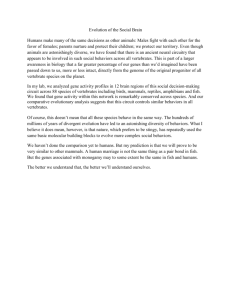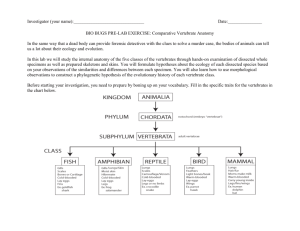Vertebrate Study Guide: Evolution & Function
advertisement
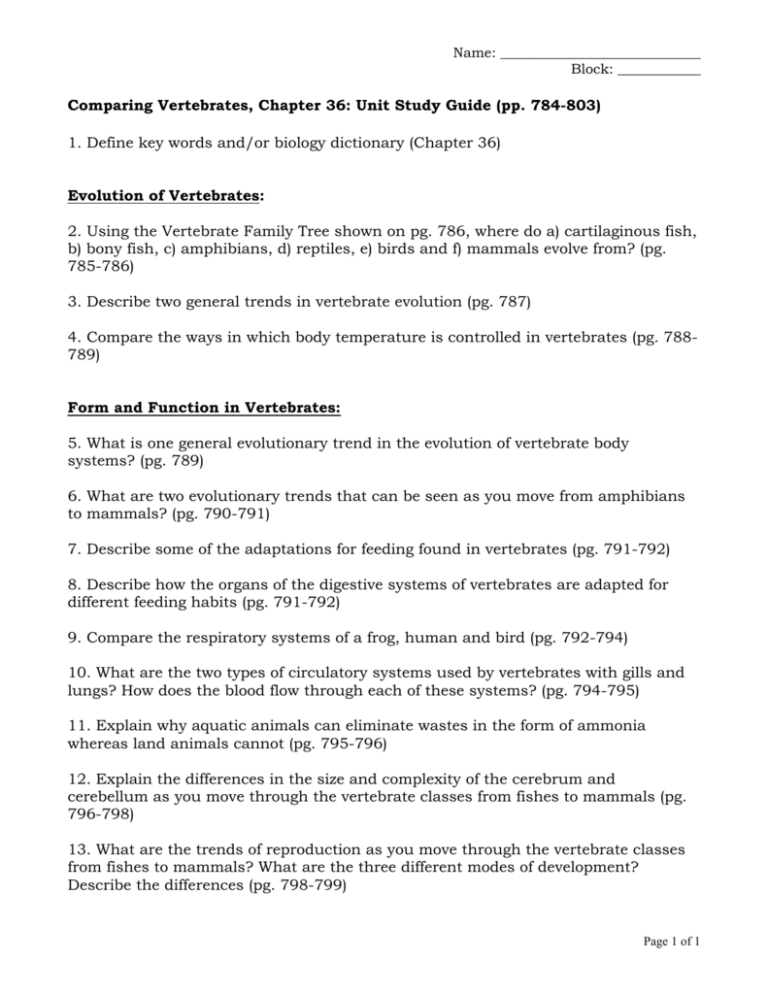
Name: _____________________________ Block: ____________ Comparing Vertebrates, Chapter 36: Unit Study Guide (pp. 784-803) 1. Define key words and/or biology dictionary (Chapter 36) Evolution of Vertebrates: 2. Using the Vertebrate Family Tree shown on pg. 786, where do a) cartilaginous fish, b) bony fish, c) amphibians, d) reptiles, e) birds and f) mammals evolve from? (pg. 785-786) 3. Describe two general trends in vertebrate evolution (pg. 787) 4. Compare the ways in which body temperature is controlled in vertebrates (pg. 788789) Form and Function in Vertebrates: 5. What is one general evolutionary trend in the evolution of vertebrate body systems? (pg. 789) 6. What are two evolutionary trends that can be seen as you move from amphibians to mammals? (pg. 790-791) 7. Describe some of the adaptations for feeding found in vertebrates (pg. 791-792) 8. Describe how the organs of the digestive systems of vertebrates are adapted for different feeding habits (pg. 791-792) 9. Compare the respiratory systems of a frog, human and bird (pg. 792-794) 10. What are the two types of circulatory systems used by vertebrates with gills and lungs? How does the blood flow through each of these systems? (pg. 794-795) 11. Explain why aquatic animals can eliminate wastes in the form of ammonia whereas land animals cannot (pg. 795-796) 12. Explain the differences in the size and complexity of the cerebrum and cerebellum as you move through the vertebrate classes from fishes to mammals (pg. 796-798) 13. What are the trends of reproduction as you move through the vertebrate classes from fishes to mammals? What are the three different modes of development? Describe the differences (pg. 798-799) Page 1 of 1


